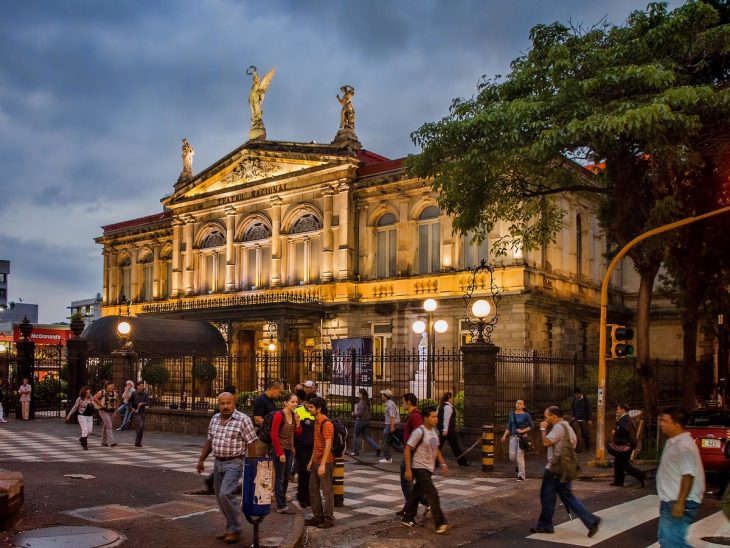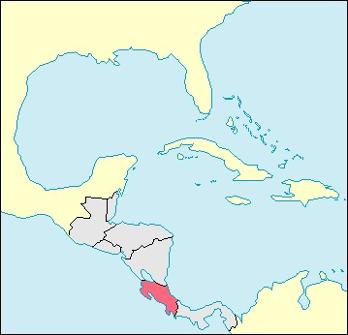What is the Capital of Costa Rica? San Jose

Capital City of Costa Rica: San José
City Overview
San José, the capital and largest city of Costa Rica, is located in the central part of the country, within the Central Valley region. It serves as the political, economic, and cultural center of Costa Rica. The city was officially founded in 1737, though its origins trace back to earlier settlements. It became the capital of the country in 1823, following independence from Spain and the formation of the new republic. With a population of over 340,000 residents in the city proper and more than 2 million in the Greater San José area, it is the most populous urban center in Costa Rica.
San José is strategically located between two major mountain ranges, the Central Cordillera and the Talamanca Mountains, which give the city a unique and picturesque setting. The city lies at an altitude of about 1,170 meters (3,839 feet) above sea level, offering a temperate climate that contrasts with the tropical lowlands of the country. It is also the political, economic, and educational hub of Costa Rica, home to the government institutions, embassies, and international organizations, as well as the headquarters of major corporations and financial institutions.
The city’s economy has traditionally been centered around services, commerce, and light industry. Over the years, San José has also become a growing hub for technology, tourism, and telecommunications, offering diverse job opportunities. In addition to being the economic powerhouse of Costa Rica, San José is also known for its rich cultural life, with numerous museums, theaters, galleries, and music venues.
While the city itself is relatively small compared to some other Latin American capitals, its urban sprawl has expanded, with various suburbs and satellite towns surrounding the city. San José is a vibrant urban center that offers a mix of historical charm and modern amenities, serving as a gateway for tourists who wish to explore Costa Rica’s natural wonders, including its rainforests, beaches, and volcanoes.
Area: 44.35 km²
Population: Approximately 340,000 (2023) in the city; 2 million in the metropolitan area
Time Zone: Central Standard Time (CST), UTC -6:00
Highest Mountain: Cerro Chirripó, located in the Talamanca Mountain Range, is the highest peak in Costa Rica, with an elevation of 3,820 meters (12,533 feet).
Longest River: The Río San Juan, which forms part of the border with Nicaragua, is one of Costa Rica’s longest rivers.
San José is often the starting point for travelers exploring Costa Rica’s famous national parks, such as Manuel Antonio, Corcovado, and Arenal Volcano. The city itself is known for its public transportation system, which includes buses and a recently expanding light rail system, as well as for its green spaces and urban parks, such as Parque La Sabana and Parque Metropolitano La Sabana.
Major Landmarks
San José offers a variety of cultural, historical, and natural landmarks that make it an attractive destination for visitors and locals alike.
1. Teatro Nacional (National Theatre)
The Teatro Nacional is one of the most important landmarks in San José. Built in the late 19th century, it is considered one of the finest examples of neo-classical architecture in Central America. The theater is known for its opulent interior, including elaborate frescoes, marble staircases, and a grand opera house. It regularly hosts performances ranging from opera and ballet to classical music concerts and theatrical productions.
2. Museo del Oro (Gold Museum)
The Gold Museum is another major landmark in San José. Located in the heart of the city, beneath the Plaza de la Cultura, the museum showcases an extensive collection of pre-Columbian gold artifacts from Costa Rica’s indigenous cultures. The museum also provides insight into the region’s archaeological and cultural history.
3. Museo Nacional de Costa Rica (National Museum of Costa Rica)
The National Museum is housed in a former military barracks built in the late 19th century. The museum offers a wide-ranging collection of archaeological, historical, and natural history exhibits, including artifacts from indigenous cultures, as well as exhibitions about Costa Rica’s colonial and post-independence periods.
4. Parque La Sabana
Parque La Sabana is the largest urban park in San José and is often referred to as the city’s “central park.” It spans over 70 hectares and features walking paths, sports fields, a lake, and even the Costa Rican Art Museum, located in a former airport building. It is a popular spot for jogging, picnicking, and enjoying outdoor activities.
5. La Sabana Metropolitan Stadium
The Estadio Nacional de Costa Rica (National Stadium) is one of the city’s major sporting venues. Originally built in 2011, it is used for football matches, concerts, and other events. It is a modern facility that reflects the country’s passion for sports, particularly football (soccer), and is home to the Costa Rican national football team.
6. Mercado Central
The Mercado Central (Central Market) is a bustling market located in downtown San José. It is a perfect place for visitors to experience the local culture and cuisine. The market sells a wide variety of goods, from fresh produce and handicrafts to local snacks and traditional Costa Rican food.
7. Jardín Botánico Lankester (Lankester Botanical Garden)
A short drive from San José, the Lankester Botanical Garden is one of the most important botanical gardens in Costa Rica. It is home to a vast collection of orchids and native plant species and serves as a hub for conservation and research. The garden provides visitors with the opportunity to explore the country’s rich plant biodiversity.
Climate Overview
San José has a tropical climate with distinct wet and dry seasons, typical of the Central Valley region. Due to its altitude of around 1,170 meters (3,839 feet) above sea level, the city enjoys a more temperate climate compared to the lowland areas of Costa Rica. The dry season generally lasts from November to April, and the rainy season extends from May to October.
Monthly Climate Data
| Month | Average Temperature (°C) | Precipitation (mm) | Sunny Days (Average) |
|---|---|---|---|
| January | 23°C | 23 | 8 |
| February | 23°C | 20 | 9 |
| March | 24°C | 20 | 9 |
| April | 24°C | 37 | 8 |
| May | 23°C | 214 | 5 |
| June | 23°C | 188 | 5 |
| July | 23°C | 140 | 6 |
| August | 23°C | 166 | 5 |
| September | 23°C | 231 | 5 |
| October | 23°C | 268 | 5 |
| November | 23°C | 184 | 6 |
| December | 23°C | 50 | 7 |
Other Cities as Capital in the History of Costa Rica
Cartago (1563–1823)
Before San José became the capital, Cartago was the capital of Costa Rica. Founded in 1563, Cartago was the first colonial settlement and the heart of Spanish administration in the region. However, after a series of natural disasters, including earthquakes, the capital was moved to San José in 1823.
San José (1823–Present)
Since 1823, San José has been the official capital of Costa Rica. The city grew rapidly after its establishment as the capital, and it became a vital hub for Costa Rica’s political, economic, and cultural development. It has retained its status as the nation’s capital into the present day.
Country Facts
General Information about Costa Rica
Costa Rica is a small but highly biodiverse country in Central America, bordered by Nicaragua to the north, Panama to the south, the Caribbean Sea to the east, and the Pacific Ocean to the west. Known for its commitment to environmental conservation, Costa Rica is a democratic republic with a strong tradition of peace, having abolished its military in 1949.
- Population: Approximately 5.3 million (2023)
- Area: 51,100 km²
- Largest City: San José (capital)
- Currency: Costa Rican colón (CRC)
- Official Language: Spanish
- ISO Country Codes: CR (ISO 3166-1 alpha-2), CRI (ISO 3166-1 alpha-3)
- National Anthem: “Noble patria, tu hermosa bandera”
- Independence: September 15, 1821 (from Spain)
- Government: Democratic Republic, with a presidential system
Costa Rica is renowned for its natural beauty, with a range of rainforests, beaches, and volcanoes, making it a popular ecotourism destination. It is also one of the most stable and prosperous countries in Latin America.














































